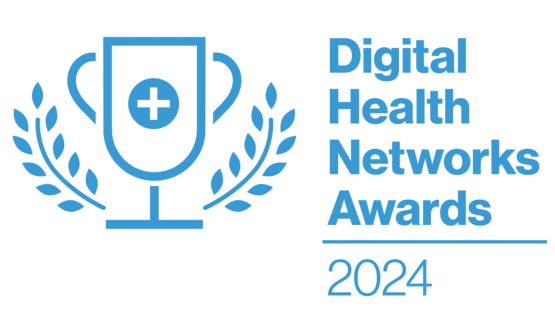Enter the CCG: Dear Santa
- 17 December 2014

I’m a great believer in precise communication. Yet how often does the act of writing or speaking interfere with understanding?
For example: “King Charles walked and talked half an hour after his head was cut off.”
Ridiculous, I know. Yet it becomes completely logical with the addition of a full stop, a capital and a comma, in that order (I’ll leave you to work out where to put them).
Then there’s the matter of using words precisely. Do you know the difference between masterful and masterly, continual and continuous, and jealousy and envy?
Attention to detail like this creates accuracy and non-ambiguity; though others probably regard it as incipient OCD.
TLAs, FLAs and counting
And so to my big adventure of the last three years; walking into the minefield of NHS management and its terminology.
My first task was mastering acronyms. Some managers seem to talk in these – BA, BI, BO… Then there are JDs, CVs and of course D&V.
TLAs (three letter acronyms to you and me) – and FLAs of course – certainly serve a useful function as shorthand.
Full blood count is always abbreviated to FBC: full business case is also abbreviated to FBC, which provides endless opportunities for entertainment on the wards.
At the NCRP for C&B (keep up) we have a delightful member – a dentist – who is even more acronym-challenged than me.
Whenever anyone uttered a TLA he would put his hand up and shout: “Acronym warning!” The rest of us would smile politely, and gently tell him – in a Haiku – what he was missing.
This proved a godsend to the others in the room who, like me, don’t speak Acronym (it’s like Latin inscriptions, all in uppercase, such as GPSoC…. ah).
Sadly, the managers got the better of him in the end. “Why would a dentist want to use C&B?” they asked.
“For hospital referral of complicated dental cases,” he replied, “…difficult extractions, disorders of the TMJ….”
“AHA” cried everyone, “Gotcha!” (Though why they were so worked up about the American Heart Association I didn’t understand. Maybe it was activity hazard analysis they were on about.)
Fluent management
The next step in my induction into the world of management came with specialised managerial concepts – things like glide path, bubble diagrams, CCNs, and bar charts (which ought to measure one’s alcohol intake but mostly don’t).
I can just about keep up with RAG ratings and Amber warnings, but get lost with initial phase delivery projects, external dependencies, as-is reporting and patient journey workshops – to say nothing of volume performance, risk and issue profiles and bulk dress rehearsals.
And to me, ‘stakeholders’ sounds positively medieval (burning at, for the purpose of). This is where you can start playing buzzword bingo (a real game, by the way – do Google it).
Software: a language of its own
Software, too, can be confusing. As we have just seen, to Google has become a verb – quite a long way from ARPANET, if you ask me.
Then there is Splunk (I kid you not – it’s a monitoring tool from the HSCIC – and if you say that too quickly it sounds like a sneeze, or a swan honking).
Which reminds me: one organisation I work for uses software called SWAN (it stands for ‘software without a name’ — which I suspect is now a logical misnomer).
Of course there is txtspk, 2. Be4 all else it slows up reading (that’s the activity, not the town) (although it probably slows up Reading, too, for that matter).
Native doctor
Back to the meetings, and the paperwork. It’s always said that nobody can read doctors’ writing, and I’m sure that NHS managers are no exception.
I may understand exactly what I mean by Mist. Pot. Cit. – but lay people won’t know what it refers to if I handwrite it, because the words they’re trying to decipher don’t look like any of the words they’re familiar with, so they can’t pattern-match.
So I do understand (I really do) about the very real problems of intelligent people from a different discipline getting confused by the technical terms and the concepts of those from the ‘other’ side of the communication divide.
Nevertheless, things have got to such a complicated state that, rather than possessing qualifications in Latin or Greek as in the past, future medical students may need to acquire tuition in business language (FORTRAN for Dummies?) and Managerspeak.
Otherwise they risk getting lost in the Plovic plots (pronounced Plo-vitch, if you haven’t met them before) or 3-D heptagonal arrays.
Now I know this is all a supratentorial problem. Should we medics really try to understand what the managers are getting at in our joint meetings, or do we simply nod wisely so as not to look too stupid?
Maybe I’m also describing what managers feel when we clinicians launch into Latin- or Greek-based medicalese – such as temporomandibular joint dysfunction (which is what that dentist was getting at… and to be honest, I bet many non-medics are none the wiser for my explanation, either).
All I want for Christmas…
There’s a solution to all this confusion, which came to me in a flash. What both clinicians and managers need during our joint meetings is an electronic version of Douglas Adams’ Babel fish.
This would be a development from a voice processor that would work out what the speaker means, translates it into simple English, and then project the resultant text as a rolling holographic image above the speaker’s head – a bit like surtitles at the opera.
In fact, if it’s not too late to ask, I’d like Santa to bring me one for Christmas: it would save a lot of work.
Or as Churchill might have said, but didn’t quite: managers and clinicians are a common people divided by an uncommon language. Have I made myself clear?


Dr John Lockley
Dr John Lockley is clinical lead for informatics at Bedfordshire Clinical Commissioning Group and a part-time GP.




